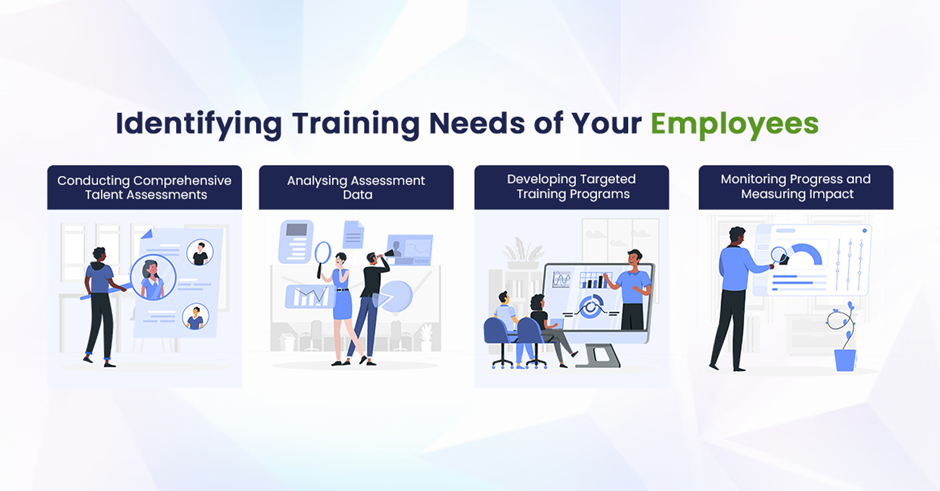In the rapidly evolving business landscape, the continuous development of employee skills is not just an option but a necessity. However, the effectiveness of training programs significantly hinges on the accurate identification of training needs. This is where talent assessments play a pivotal role, offering a systematic approach to pinpointing the specific areas where employees require development. In contrast to traditional methods, talent assessments provide a more nuanced and data-driven insight into the training needs of employees, ultimately leading to improved retention rates, enhanced employee productivity, and a more engaged workforce.
Research and case studies consistently show the positive impact of talent assessments and targeted training on organizational outcomes. For instance, companies that invest in comprehensive training and development programs, guided by talent assessment insights, see significant improvements in employee retention rates. According to the Association for Talent Development (ATD), organizations with a strong learning culture enjoy a 30-50% higher retention rate than those that don’t.
Furthermore, the use of talent assessments to guide training needs has been linked to higher employee productivity. A study by IBM found that well-trained teams can result in a 10% increase in productivity. Moreover, employees who feel their company invests in their learning and development are 42% more likely to feel engaged and satisfied at work.
Step 1: Conducting Comprehensive Talent Assessments
The process begins with the deployment of talent assessments, which are designed to evaluate a wide range of competencies, including technical skills, cognitive abilities, emotional intelligence, and behavioral traits. Unlike conventional evaluations, which might rely heavily on subjective managerial feedback, talent assessments offer an objective baseline to understand each employee’s strengths and areas for improvement.
How Talent Assessments Surpass Alternatives
Traditional approaches, such as performance reviews, often fall short because they can be influenced by managerial bias, do not consistently measure across all employees, and may not accurately capture the full spectrum of an employee’s skills and potential. Talent assessments mitigate these issues by providing a standardized and unbiased evaluation mechanism.
Step 2: Analysing Assessment Data
Once the assessments are completed, the next step involves a deep dive into the data to identify patterns, gaps, and opportunities for development. Advanced analytics can help organizations to segment employees based on their skills and competencies, enabling targeted interventions.
The Advantage of Data-Driven Insights
This analytical approach ensures that training programs are not one-size-fits-all but are tailored to address the specific needs of different employee groups. It also allows for the identification of high-potential employees who could benefit from leadership development programs, thereby supporting succession planning.
Step 3: Developing Targeted Training Programs
With a clear understanding of the training needs, organizations can then design and implement programs that address the identified gaps. These programs can range from technical skill development and soft skills enhancement to leadership training and digital literacy initiatives.
Customization Enhances Effectiveness
The specificity provided by talent assessment data ensures that training programs are more relevant and engaging for participants, leading to higher completion rates and better application of learned skills on the job.
Step 4: Monitoring Progress and Measuring Impact
The final step involves the ongoing monitoring of employee progress post-training and the measurement of the training programs’ impact on performance, productivity, and engagement. This can include follow-up assessments, productivity metrics, and employee feedback surveys.
Continuous Improvement Loop
This step is crucial for validating the effectiveness of the training interventions and for making iterative improvements to both the assessment process and the training programs themselves.
Talent assessments offer a robust framework for identifying the training needs of employees, surpassing traditional methods through their objectivity, comprehensiveness, and data-driven insights. By leveraging these assessments, organizations can design targeted training programs that not only address the specific development needs of their workforce but also contribute to higher retention rates, improved productivity, and a more engaged and capable employee base. In the pursuit of organizational excellence, the strategic use of talent assessments to inform training and development initiatives represents a critical investment in the most valuable asset of any company: its people.

